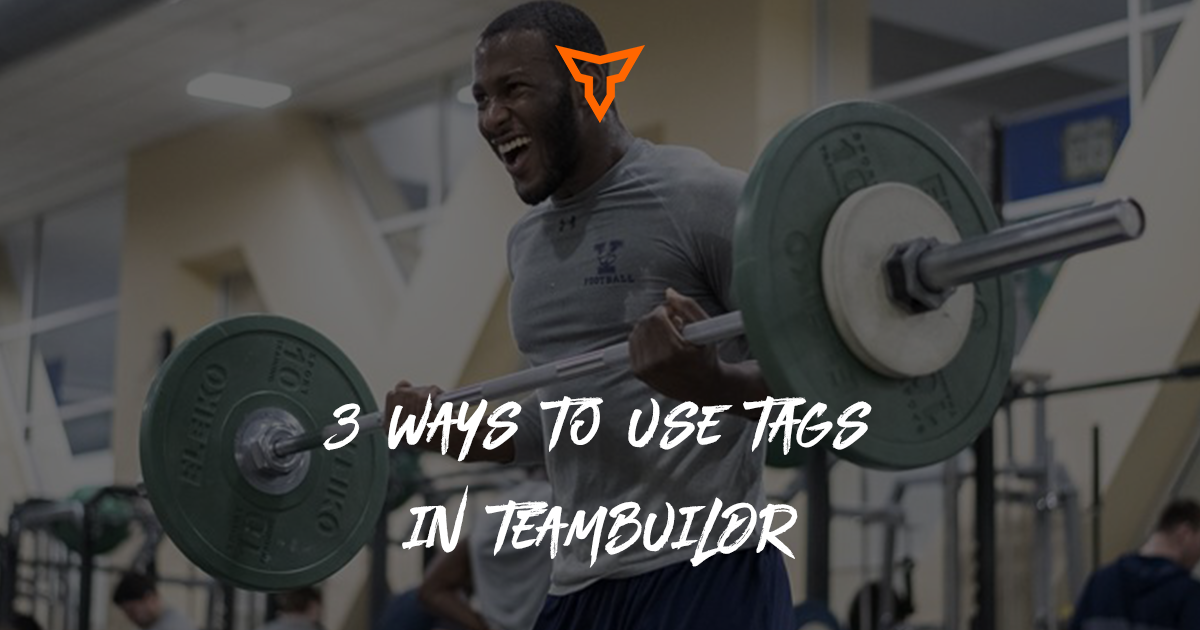Auditing Training Programs in TeamBuildr With Tom Newman
We hopped on a call with Tom Newman, the Director of Performance at Yale University to talk about the concept of auditing training programs. I think "auditing" is really interesting because I believe more coaches want to audit their programs but feel they don’t have enough time. So we’re going to go over how to effectively and efficiently audit programs and know what to look for when doing it in TeamBuildr.
How often do you audit training programs and what are some of the main benefits of doing an audit?
I think sometimes coaches get lost looking at day's training session. As coaches, we don't often always look back and think "what did I do this PAST week? or what did I do this PAST month?" Especially when transitioning between plans or getting into the season. At Yale, we will audit our programs about once a week as a group for a kind of "reality check" but it’s really something that you can do at any time.
As a coach or a director you want to be in the know. Why?
You can get called into a meeting with an administrator or a sport coach and you should have a general sense of what is going on with the programming.
It also helps you keep track of the exercises you have been using or need to use more of because the beautiful thing about strength and conditioning is that there are unlimited combinations. But that’s also the problem too. Everything we do is contextual, what works for a senior may not work for a freshman, so it’s good to keep an eye on that.
Obviously you use TeamBuilder to do your audits but coaches can do this in Excel as well. Are there some benefits to doing it one way versus the other and what is your experience?
Excel is great if you have the block itself on one sheet or one screen but what becomes really tough is when you start going into different blocks and when you start going across multiple months, that becomes really challenging. Or if you're looking at the length of an athlete's career. You really can do anything in Excel, it will just become cumbersome.
For us, quality of movement is almost, if not always, more important than quantity of the movement so the good thing about using TeamBuildr over Excel is that we can add a note to the athletes workout asking them to send us a note or video of their lift. Remember that the audit has a quantitative and qualitative component that drives that decision.
Auditing a Program
The three questions we use to write a program:
- Who are we working with?
- What are we trying to accomplish?
- How long is the program?
We use a GPP program for our incoming freshman - they don't really know any Olympics and they may not have good movement quality, but the goal is to try to get them strong. The goal after this block is to be able to make sure that they understand the weight room and that they know how to fill out their workout card.
We're only as good as the data they record which is why we like to focus on basic movement patterns, attention to detail, writing quality notes, and recording videos.
When looking at a single day, you want see the breakdown of:
- My exercise count
- Rep count
- Accessory exercises
- Load and volume of certain exercises
For a real reality check, we like to use Week View. In Week View I am able to see the programming in a larger sense. We can see the breakdown throughout the course of the week which will maybe change the first impression from just looking at a single day. Doing all of this should only take you about 5-6 minutes and then you should be ready to roll out the program. In 4 weeks, you can check back up on the program and maybe take a deeper dive.
I think sometimes we forget that when we write a program, it's not always about just getting stronger or getting some sort of physical adaptation. It could just be that the team is squared away, right? This team's never been in a weight room. They've never had any kind of positive experience. So this GPP program is a really low hanging fruit type program that anybody should be able to get success out of. So I'm happy with it. And over time we will write additional workouts with similar architecture and see what works best.
Going through this, it wasn't very hard, I could do this across 10 or 15 different programs within 15, maybe 20 minutes and just have a really good sense of what's going on in my department. Or if I write a program myself, I can quickly get the answers I need. So that's again how we audit the program at the individual and at the team level.
The nice thing about programs is there's infinite combinations, but again, you have to have a goal and intended purpose for a plan. Whether you have incoming freshman, advanced seniors, or athletes coming off of an injury, auditing is a great way to make sure you do that.
It’s also a great way to continue teaching your interns or assistant coaches because they will just practice creating, rolling out, and auditing the programs. So at the end of the block, think about -- Hey, what worked? What rep scheme was really effective? And it could be effective because the athletes got a really good positive experience out of it. Did they like going into an ascending pattern or do they like straight sets? It gives them good feedback. There's a context to everything that we do and it's about combining both that subjective and objective feedback to get our results.
Auditing doesn't have to be big and scary, especially with the environment that we're in because as a director or as a coach, you should be able to explain your programs. And this is a great way to be able to see it to ensure that a program is as optimal as it could be.
Watch the full video
Check out our full interview where Tom takes us through auditing programs in his own TeamBuildr account, how to audit a program of an athlete coming back from an injury, and how Yale University programs multiple rep schemes for his athletes.
Subscribe to our blog
Subscribe to receive the latest blog posts to your inbox every week.
Related posts
Private Facility Summer Training That Delivers: Building More Explosive Athletes

3 Ways to Use Tags in TeamBuildr

